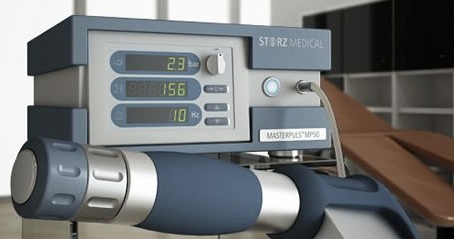 Everyone suffers from the occasional bout of back pain… so what can you do at home to decrease the pain?
Everyone suffers from the occasional bout of back pain… so what can you do at home to decrease the pain?
One way to decrease back pain is to get a good night sleep. Pain is a leading cause of insomnia: approximately two-thirds of people with chronic back pain suffer from some type of sleep disorder. Make sure to organize your bedroom to help you get a good night sleep. Keep your room dark and cool, make sure you have ample pillows to help support your hips, neck and back as needed.
Another easy way to help reduce back pain is simply applying cold/hot packs.
Cold therapy – It reduces inflammation, acts as a local anesthetic, and keeps the nerves from “spasming” and causing pain.
Heat therapy –It stimulates blood flow, which brings healing nutrients to the affected area and can inhibits the pain messages being sent to the brain.
Not all types of heat will work for every person. Heat therapy can take the form of a hot shower, soaking in a hot tub, a heating pad, hot water bottle, or commercial heat wraps that you place on your body and they provide continuous, low-level heat.
Gentle stretching can also help to relieve back pain. When stretching, make sure that it is pain free and never force a stretch.
- Move into the stretch slowly and avoid bouncing
- Hold stretches long enough (20-30 seconds)
- Repeat the stretch several times
If you suffer from chronic back pain or neck pain, check with your physician or health care practitioner before starting any type of exercise or stretching routine.
Static back stretch:
- Lie face-up in front of a sturdy chair, with your legs raised and buttocks close to the chair’s front legs.
- Bend knees to 90° and place calves on chair seat, with legs relaxed in a comfortable position.
- Breathe from your stomach and let the lower back muscles relax.
Knee to chest stretch:
- Lie on your back with your knees bent.
- Grab both knees and slowly bring them towards your chest and a stretch is felt in your lower back.
- Hold this position for 30 seconds before lowering your legs back to the floor again.
- you can also complete this stretch with one leg at a time: Slowly bend one knee and pull your leg up to your chest. Wrap your arms around your thigh, and gently pull the knee towards your chest. Hold and slowly extend the leg to starting position, and repeat with other side.
Supine Groin Stretch:
- Begin in Static Back position – lie on your back with one leg resting on a chair, knee bent at 90 degrees, while the other leg is extended straight out and resting on the floor alongside the chair.
- Make sure both legs are aligned with the hips and shoulders
- The foot of the extended leg should be propped upright to preventing it from rolling to one side
- Stretch arms along the floor, straight out from shoulders, palms up. Relax entire body and hold
If you are still suffering from back pain after a day or two, contact your health care practitioner: chiropractor, physiotherapist, massage therapist or acupuncturist and make sure you rule out anything serious.









